Kentucky has incredible culture, local scenery, and cuisine, but all of the beauty in the world doesn’t hide the many dangerous animals in the sky. While the main threat to Kentucky’s locals lives exclusively on land, the Bluegrass State is no stranger to dangerous birds of prey. Only professionals have the training to handle these birds safely in controlled settings. If you decide to stroll outside, you need to know what’s above you to know how to be the safest you can be. Let’s look at the most dangerous animals patrolling Kentucky’s skies.
What is the Most Dangerous Animal in Kentucky?
Before diving into the airborne animals in Kentucky, understanding your biggest land threat is just as necessary. Black bears and rattlesnakes might seem like the biggest threats, but whitetail deer have a bigger impact than any other animal in the region. Keep your eyes on the road when you drive to protect yourself from a fatal run-in.
Most Dangerous Airborne Animals in Kentucky
Red-Tailed Hawk
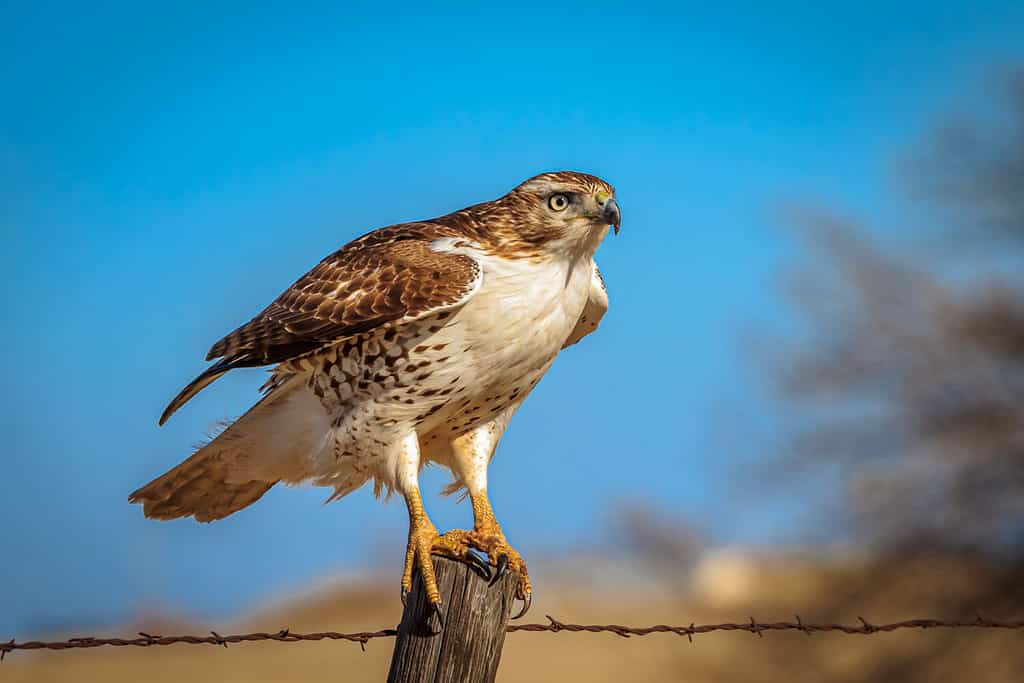
The red-tailed hawk is Kentucky’s most common dangerous animal in the skies, though their aggression primarily comes from feeling threatened.
©Richard G Smith/Shutterstock.com
The most important bird of prey to watch for in Kentucky is the red-tailed hawk. While this hawk seems fairly small, their fast movement allows them to maneuver quickly. This bird zeroes in on its prey by watching from high perches, so they won’t likely take the opportunity to sit along your fence. However, since they need an open field for hunting, farmlands have the biggest reason to worry.
As soon as the red-tailed hawk is ready, they fly down quickly, capturing their prey as they close their talons around their body. They’ll soar above these same open fields, looking for prey that they have the strength to pick up. Tall buildings in the city offer one of the best perches, and their incredible eyesight makes this maneuverability easier to use.
The most dangerous time of day for the red-tailed hawk is around dusk, as the sun starts to go down. They have a violent reputation as a predator and a carnivore, but their attacks on humans tend to be territorial. Since many hawks stick with the same nest and home for years, anyone who directly interferes with this area could be attacked, especially if they have fledglings.
Sharp-Shinned Hawks

The fast movement and familiar markings of the sharp-shinned hawk cause many locals to mistake them for red-tailed hawks instead.
©Vizz Effect/Shutterstock.com
If you aren’t sure if you just saw a red-tailed hawk, you might be looking at another common bird of prey in the area. The sharp-shinned hawk is quite small, disappearing quickly from your sight if you manage to get a glimpse. With long tails and legs but short wings, they dive deep into the woods as they fly, seeking out mice and smaller birds as their prey. The easiest time to get a look at these birds is during migration when it flies south.
When the sharp-shinned hawk nests, they are incredibly hard to locate. This time of hiding is crucial to allow their babies to grow up, which is why they become aggressive if their nest is threatened. They go out of their way to not be found during this time, concealing themselves in dense forests and brushy areas. If you have a bird feeder, this hawk has an easy source of songbirds in their diet. They ambush their prey, flying at high speeds to reach them.
This bird is the smallest is both Canada and the United States, but don’t mistake its size as non-threatening. They are highly aggressive, and they will do anything they need to do to protect their nest and young.
Cooper’s Hawk

The sharp beak of Cooper’s hawk allows the bird to rip into the flesh of their prey easily.
©J. S. Fisher/Shutterstock.com
Cooper’s hawk is slightly larger than the sharp-shinned hawk, making it a little easier to spot. It live natively in North America, and Kentucky is just one of the many states that has them. Males tend to be larger (like most birds of prey), and both have hooked bills to tear apart their prey’s flesh. Their biggest aggression comes while hunting, seldom perching to rest and preen. They like to stay away from other animals and humans, looking for waterways without other animals around to drink.
With incredible agility, this hawk flies easily through mixed forests and mountain regions as it hunts or rests. They don’t need a big open field like other hawks do, and they live all over Kentucky. The hawks in Kentucky tend to be larger than the birds of this species towards the west. They aren’t endangered, but they are highly aggressive near their nest. Much of their dangerous nature tends to be pointed at other birds, but humans who put themselves too close could suffer catastrophic injuries.
Red-Shouldered Hawk
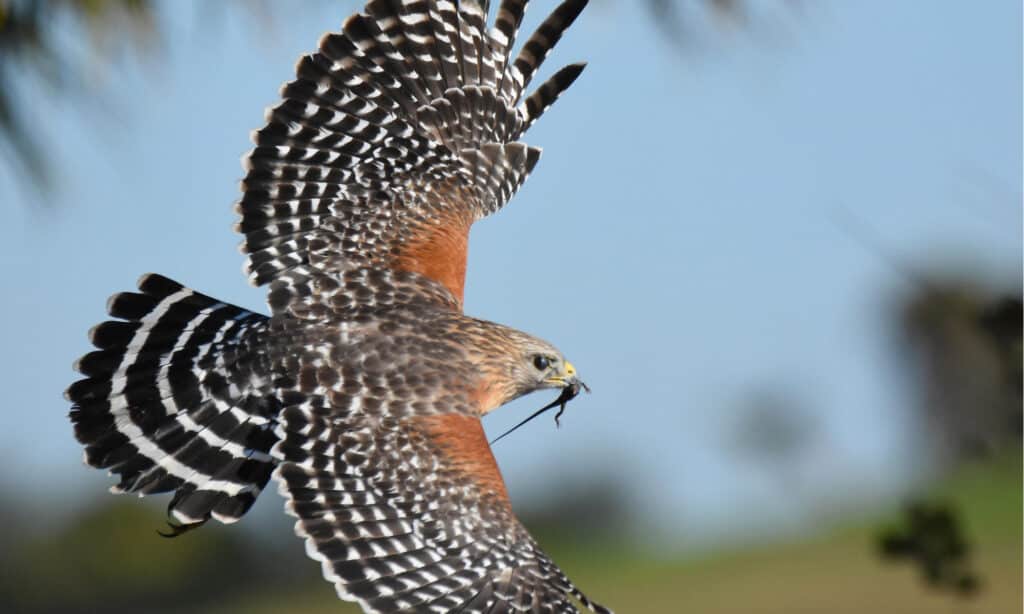
The telltale sign of this hawk is the gentle red markings that sit at the top of their “shoulders.”
©MTKhaled mahmud/Shutterstock.com
The red-shouldered hawk barely weighs more than a pound, but it is powerful. They migrate short distances, though their preferred homes tend to be along the coast. When these birds migrate, the juveniles go first during the fall. This migration priority changes in the spring when the adults lead. Their wide wingspan is a sight to see as they fly overhead, but it may not be that way for long.
This hawk’s life currently has the threat of deforestation ahead of it, leading to a drastically smaller population. While it once held a position as one of the most common birds of prey in North America, the 1900s brought significant change in the local climate as commercialization increased. One of the other major contributions to their dwindling home and population is the increased access to firearms at the time. Local populations dropped by over half, and local conservationists have been working to fix it ever since.
With its crow-like size, the red-shouldered hawk seems safe, but it isn’t. With dangerous talons and a hooked bill like other hawks, this bird moves fast, tearing into flesh with ease.
Osprey
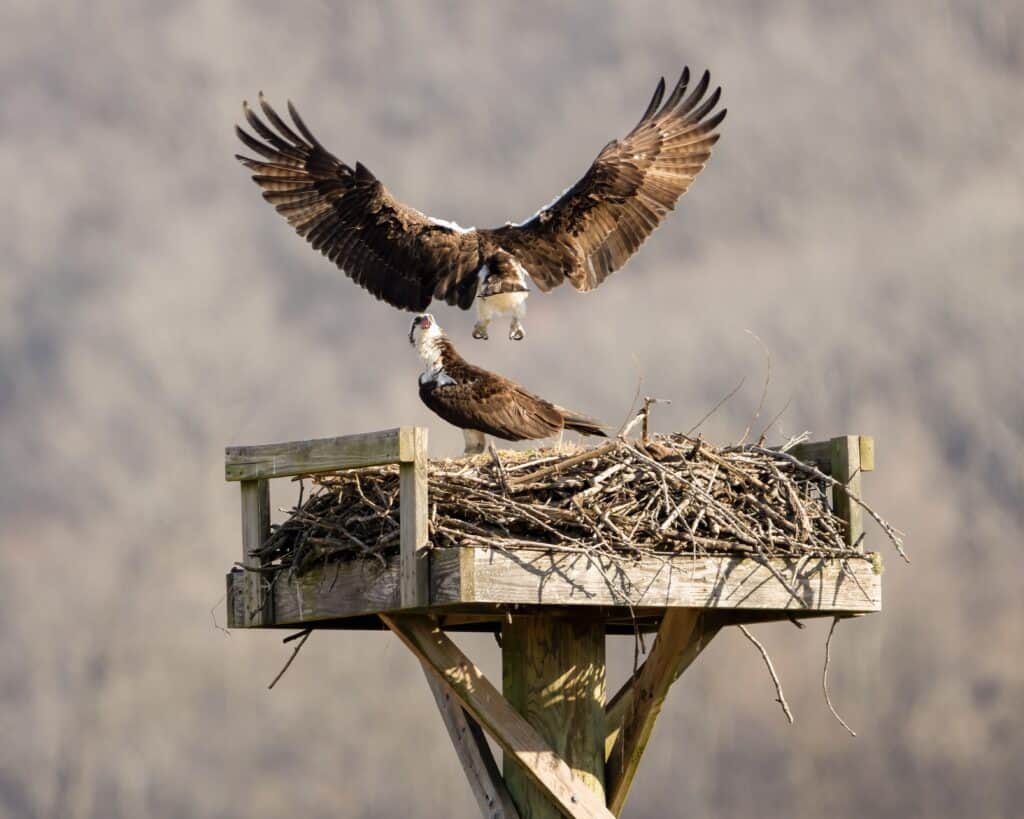
Osprey have talons and a sharp beak that easily tear through flesh, especially when their chicks are on the line.
©Wirestock Creators/Shutterstock.com
Ospreys are incredibly common in North America, especially in Kentucky. With a white belly and a brown back, they blend easily into wooded forests. To get easy access to fish, ospreys live around areas with shallow water. They first started nesting in Kentucky in the 1940s, finding that many of the local rivers and lakes provided excellent resources for their meals.
Like hawks, ospreys get fairly protective around their chicks. If you don’t pay attention to the nests nearby, you could become the victim of a fairly dangerous and violent attack from an osprey. They generally only become aggressive if something threatens the safety of their young. Since females mind the nest with males to defend it, careless wandering along these riverbanks could put you face to face with a very aggressive male osprey.
Great Horned Owl
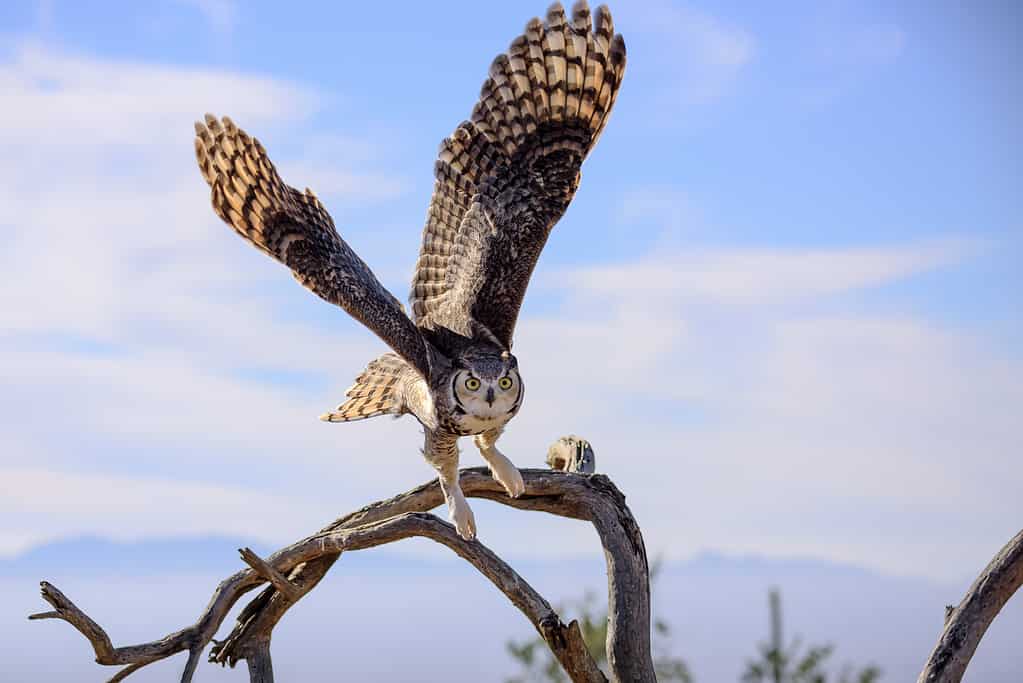
The great horned owl seems majestic, but it is also one of the most aggressive and dangerous owls in North America.
©iStock.com/kojihirano
Most people have a particular affection for owls, but the great horned owl is a prime example of why that adoration needs to stay far away from the real animal. This bird has a reputation for being tough and aggressive, hunting and killing animals that are much bigger than them. With the flexibility to live in nearly any habitat, this owl rarely has to build their own nest. Instead, they use the former nests of hawks or hollow trees to call their home.
There is no particular habitat needed to keep the great horned owl happy. They’ll find a place to live in forests, swamps, and everywhere in between. The only protection that this owl ever looks for is a place to take cover. They live throughout the state, and they are one of the most aggressive species of owls in the country.
Unlike some birds, the great horned owl seemingly has no fear. They are highly aggressive, and they have no problem tackling a human despite the size difference. They even pick domestic pets as their prey, so anyone with an outdoor animal in Kentucky needs to keep their eyes out at night.
Barred Owl
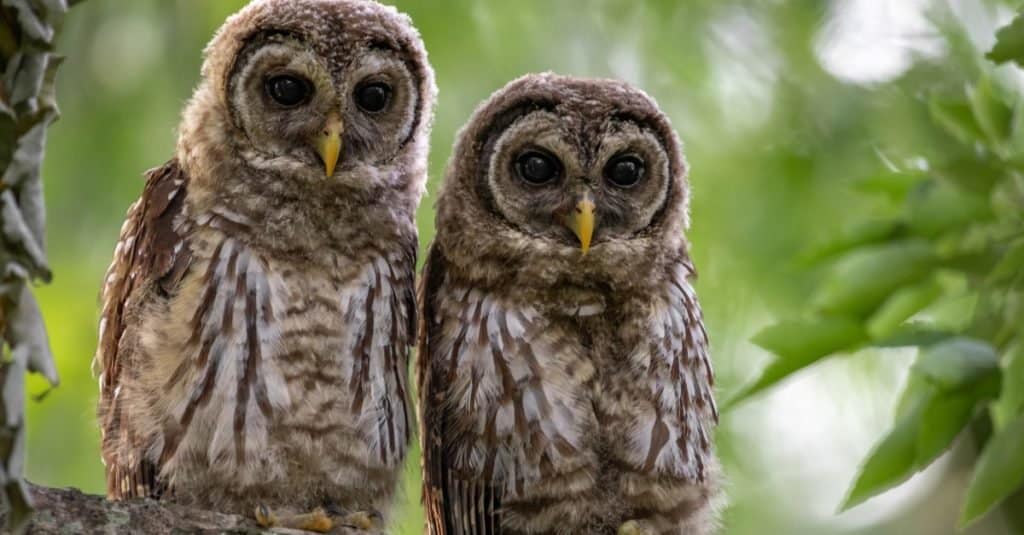
The barred owl’s attack often comes with a loud screech as they fly through the sky.
©iStock.com/Harry Collins
The barred owl is yet another dangerous owl in the state of Kentucky. It features massive black talons, and they don’t migrate out of Kentucky. Instead, this bird is here to stay all year long, which is why they are such a big issue. The aggression of the barred owl makes it highly dangerous. They become territorial when they establish a nest and some attack humans when threatened.
Their dark brown markings conceal the barred owl well within Kentucky’s woodlands and wooded swamps. While they once inhabited Kentucky in high numbers, the loss of much of the swamp areas in Kentucky caused the population to suffer. Some have flown northwest to seek out their preferred home.
Eastern Screech Owl
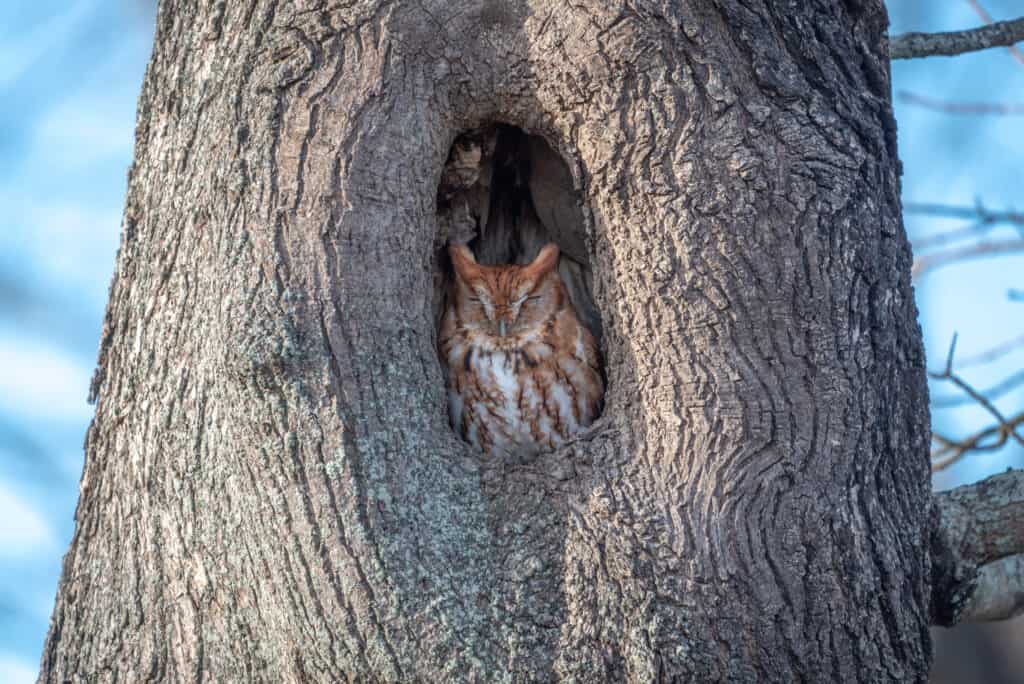
The eastern screech owl has beady yellow eyes with a matching bill, but its massive talons on its feet are one of its most dangerous qualities.
©Kathryn Bedard/Shutterstock.com
Living primarily in mixed woodlands and deciduous forests, the eastern screech owl has the space they could need to hunt. Unfortunately, they rarely stay far away from people. This bird has no issue spending time in parks and gardens with plenty of foot traffic from locals. They aren’t endangered, and the IUCN classifies them as “Least Concern.”
Following the common theme with the other birds of prey in Kentucky, screech owls are incredibly protective over their chicks. Despite their preferred public habitat, they attack when humans come near their nest or make them feel threatened. Instead of creating their own nest, they must rely on the cavities that woodpeckers, squirrels, and other animals create in trees. Once they choose their nest, they come back to it annually. Leaving this space alone is the easiest way to stay off their radar.
Snowy Owl

One of the easiest owls to identify in Kentucky is the snowy owl, known for its white features and mixed darker markings.
©iStock.com/Pasforward
While a snowy owl is breathtakingly beautiful, they also pose a major threat. They light to hunt and remain active through the day, sleeping at night. They hoard food and store it in their nest to come back to their prey as they need. These owls prefer open areas, even living in grasslands and open fields higher north. During the day, they aren’t active at the hottest or coldest parts of the day. Local authorities suggest that the hardest times to find these owls are at noon and midnight because of these preferences.
Finding a snowy owl is a rarity in Kentucky, but their aggression and seldom visits are enough to warn locals to keep their distance. They are very territorial, but they use their various calls to make their dangerous aggression known first. They aren’t afraid to defend their nest from anyone, whether it includes humans, wolves, or other threats.
Bald Eagle
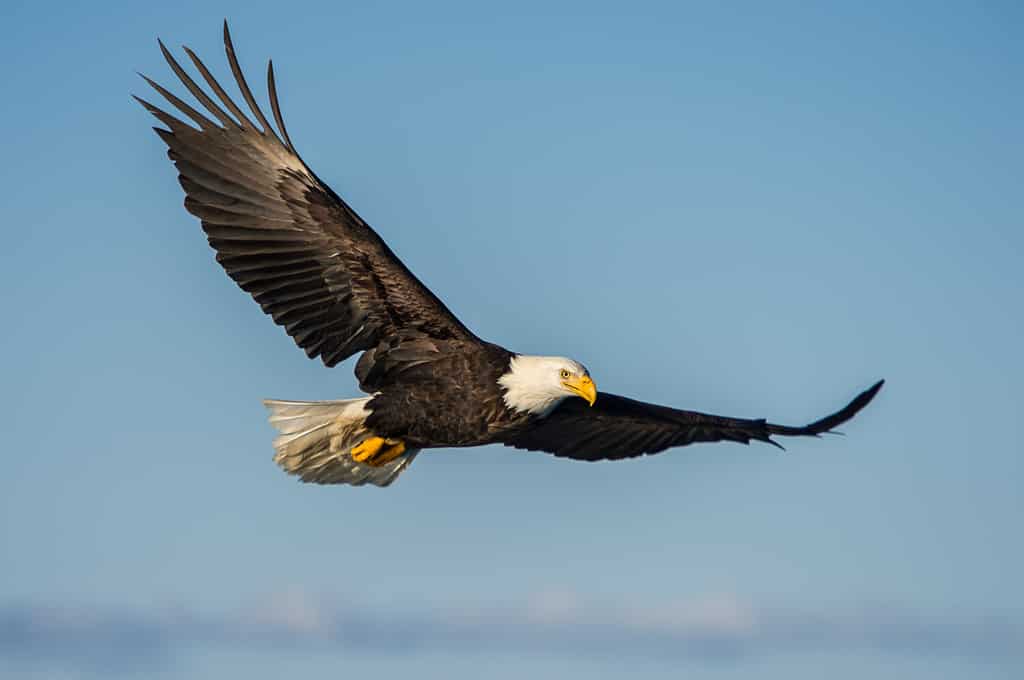
Though the bald eagle is America’s symbol of freedom and courage, it is also extremely dangerous to Kentucky locals.
©FloridaStock/Shutterstock.com
The bald eagle has one of the most easily recognizable appearances in the entire United States. With a 7-foot wingspan, powerful talons, and incredible eyesight, these eagles are incredible hunters. They need to live within a few miles of some source of water to maintain their diet of fish and other prey. Their preferred nesting area comes from multiple areas, like manmade structures and large trees.
With 2 different species of eagles in Kentucky, it’s important to know which ones to look for. The only other species of eagle in the state is the golden eagle, but it normally flies north in July for nesting season. In the entire state, there are just 187 bald eagles. With the current conservation efforts, this population is a reflection of a 400% jump from 2006 to 2019.
Though bald eagles attacked humans before, the injuries you sustain won’t likely be fatal or severe. They are quite dangerous when threatened, but surviving the attack isn’t difficult.
Mosquitos
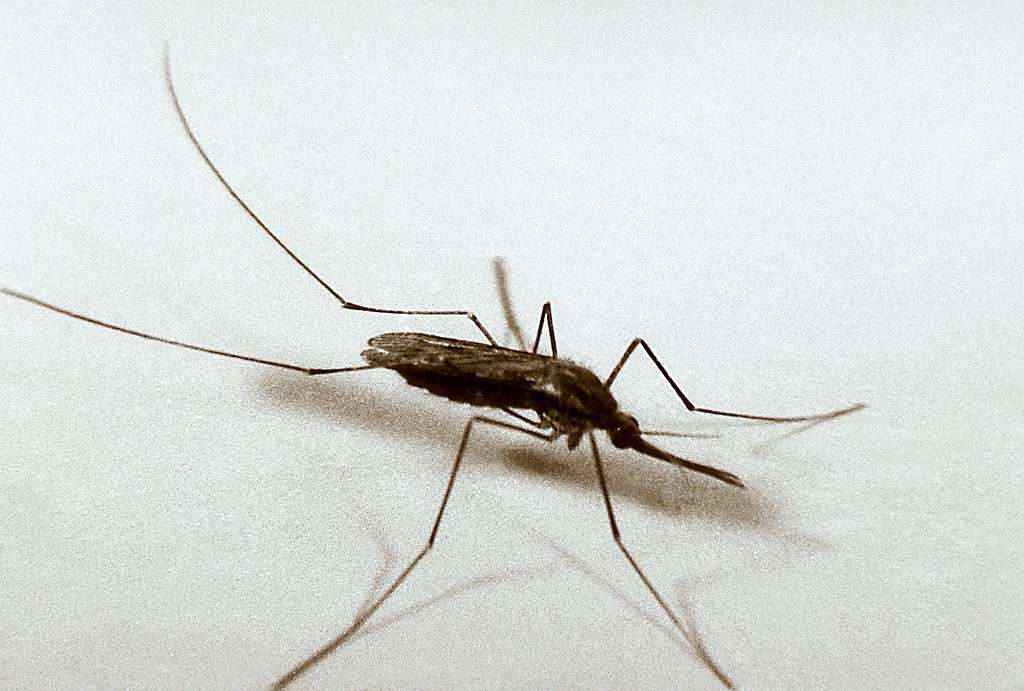
Mosquitos live almost anywhere, making them both resilient and dangerous.
©https://pixnio.com/fauna-animals/insects-and-bugs/mosquito/close-up-photograph-of-an-anopheles-quadrimaculatus-mosquito-on-white-background# – Original / License
While most of the animals in Kentucky’s skies are the most aggressive birds of prey, excluding one of the most dangerous pests in the world could leave you exposed to danger. With so much humidity, don’t be surprised when the next attack comes from a much smaller member of the animal kingdom – the mosquito. Though they aren’t even half an inch long, their ability to transfer disease and cause allergic reactions relentlessly makes them one of the most dangerous animals in Kentucky.
Kentucky is home to 60 different mosquito species, compared to 200 species in the entire United States. While wearing bug repellant or using citronella candles helps, the ability to carry disease from one person to the next is one of the most dangerous qualities of the mosquito.
Wasps
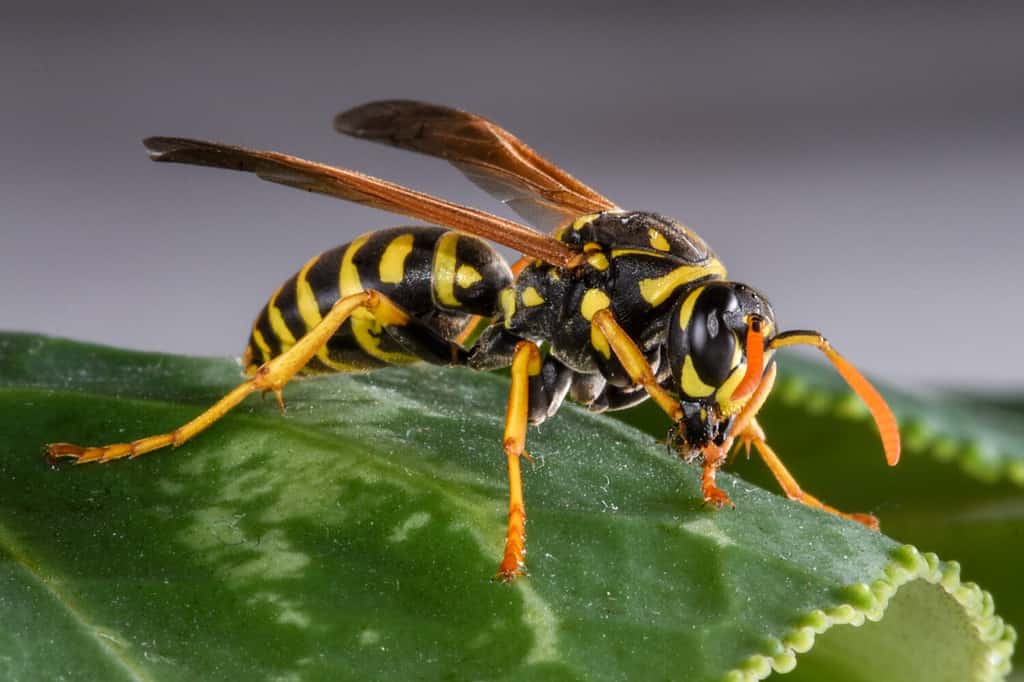
Local Kentuckians call wasps “hornets” or “yellowjackets” as they refer to this dangerous insect.
©Randy Runtsch/Shutterstock.com
If mosquitos are one of the few dangerous insects to look out for, the wasp is even more important. They aren’t directly aggressive for most people. Unfortunately, they build their nests so close to civilization that their removal is as big of a threat as keeping them. Anyone exposed to a hornet’s nest is in great danger of being bitten. The resulting sting varies from mild pain to a potentially fatal allergic reaction, depending on the person.
Most Dangerous Animals Patrolling Kentucky’s Skies
| Rank | Animal |
| 1 | Red-tailed hawk |
| 2 | Sharp-shinned hawk |
| 3 | Cooper’s hawk |
| 4 | Red-shouldered hawk |
| 5 | Osprey |
| 6 | Great horned owl |
| 7 | Barred owl |
| 8 | Eastern screech owl |
| 9 | Snowy owl |
| 10 | Bald eagle |
| 11 | Mosquitos |
| 12 | Wasps |
The photo featured at the top of this post is © David Brace/Shutterstock.com
Thank you for reading! Have some feedback for us? Contact the AZ Animals editorial team.







